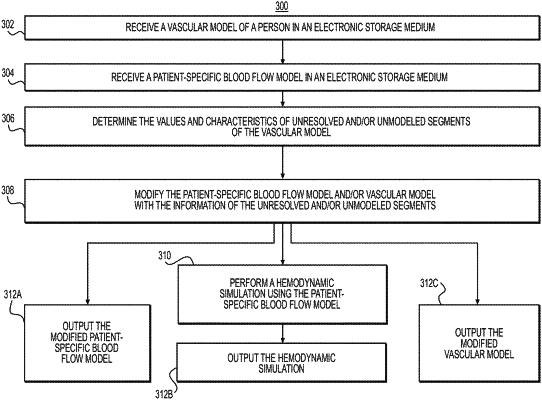| CPC G16Z 99/00 (2019.02) [G16H 30/40 (2018.01); G16H 50/50 (2018.01)] | 20 Claims |

|
1. A computer-implemented method of identifying and modeling effects of unresolved vessels in image-based patient-specific hemodynamic models, the method comprising:
receiving, in an electronic storage medium, one or more patient-specific anatomical models representing at least a vessel of a patient;
determining, using a processor, an unbranched or unmodeled segment of the one or more patient-specific anatomical models;
calculating, using the processor, at least one of a length or a diameter of the unbranched or unmodeled segment;
receiving, in the electronic storage medium, a reference value corresponding to a region of a body of the patient represented by the one or more patient-specific anatomical models;
comparing, by the processor, the calculated at least one of the length or the diameter of the unbranched or unmodeled segment to the reference value; and
using the processor, generating an updated patient-specific anatomical model based on the comparison between the calculated at least one of the length or the diameter of the unbranched or unmodeled segment to the reference value.
|